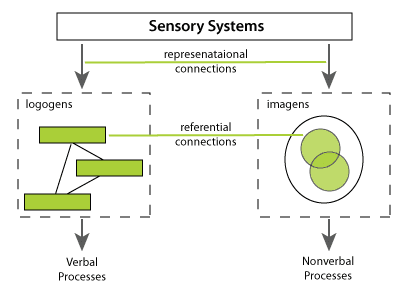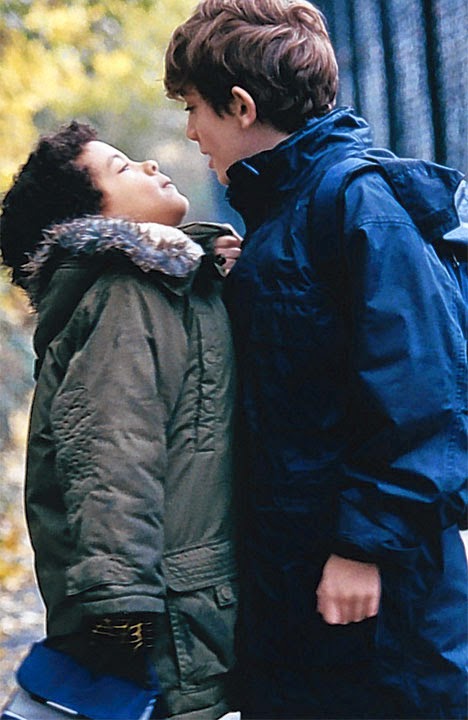The Theory
Paivio's dual coding theory considers the way we process verbal and non-verbal information. In 1986 he stated: 'Human cognition is unique in that it has become specialized for dealing simultaneously with language and with nonverbal objects and events. Moreover, the language system is peculiar in that it deals directly with linguistic input and output (in the form of speech or writing) while at the same time serving a symbolic function with respect to nonverbal objects, events, and behaviors. Any representational theory must accommodate this dual functionality.' (p 53). Paivio's model of cognition featured two modes of processing, known as imagens (images) and logogens (words), which are illustrated below.
Visual and verbal information are processed in different ways along discrete pathways in the brain, and these are thought to create different mental representations. In a variety of experiments, it was found that people can generally process images faster than text, and can make quicker and smarter decisions when presented with pictures than they can with verbal instructions.
How it can be applied in education
Teachers should be aware that all students can process information in several different ways. Looking at images can evoke a different response to listening to the spoken word, or reading text. Giving children pictures and words in combination can provide them with the best chances to learn concepts. If Paivio's theory is correct, and verbal and image storage of information occur in separate areas of the human brain, then retention (and retrieval) of that information should be stronger (and faster) if both memory traces have been established. The teaching of literacy for example, can be greatly enhanced when children receive verbal, text and imagery based information simultaneously. Thus literacy learning can encompass reading, writing, speaking and listening. Dual Coding theory also explains why multi-media forms of education have been so successful in the past, although alternative cognitive processing theories that feature later in this series challenge this view.
Reference
Paivio, A. (1986) Mental Representations. New York: Oxford University Press.
Previous posts in this series:
1. Anderson ACT-R Cognitive Architecture
2. Argyris Double Loop Learning
3. Bandura Social Learning Theory
4. Bruner Scaffolding Theory
5. Craik and Lockhart Levels of Processing
6. Csíkszentmihályi Flow Theory
7. Dewey Experiential Learning
8. Engeström Activity Theory
9. Ebbinghaus Learning and Forgetting Curves
10. Festinger Social Comparison Theory
11. Festinger Cognitive Dissonance Theory
12. Gardner Multiple Intelligences Theory
13. Gibson Affordances Theory
14. Gregory Visual Perception Hypothesis
15. Hase and Kenyon Heutagogy
16. Hull Drive Reduction Theory
17. Inhelder and Piaget Formal Operations Stage
18. Jung Archetypes and Synchronicity
19. Jahoda Ideal Mental Health
20. Koffka Gestalt theory
21. Köhler Insight learning
22. Kolb Experiential Learning Cycle
23. Knowles Andragogy
24. Lave Situated Learning
25. Lave and Wenger Communities of Practice
26. Maslow Hierarchy of Human Needs
27. Merizow Transformative Learning
28. Milgram Six Degrees of Separation
29. Milgram Obedience to Authority
30. Norman The design of everyday things
31. Papert Constructionism
Photo by Steve Wheeler
Graphic by Instructional Design

In two minds by Steve Wheeler is licensed under a Creative Commons Attribution-NonCommercial-ShareAlike 3.0 Unported License.




